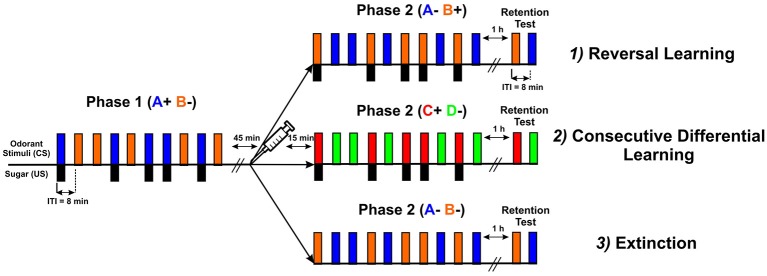Figure 2.

Scheme describing the three types of experiments performed: (1) reversal learning (A+ vs. B− → A− vs. B+); (2) consecutive differential learning (A+ vs. B− → C+ vs. D−); and (3) extinction (A+ vs. B− → A− and B−). All three types had the same common first phase, in which bees were trained to discriminate two odorants (CS), one (blue bars) paired five times with sucrose delivery (black bars, US) and the other presented five times without sucrose (orange bars). The intertrial interval (ITI) was 8 min. After the first phase, bees experienced a 45 min rest followed by an injection of PBS, PTX or CGP54626. The second conditioning phase started 15 min after injection. In the reversal learning experiment, the same odorants were presented with a reversed contingency. In the consecutive differential-learning experiment, odorants A and B were replaced by two novel odorants C and D. In the extinction experiment, odorants A and B were presented again but without sucrose reward. In all three protocols, a retention test was performed 1 h after the end of the second phase. In this test, the two odorants used in the last conditioning phase were presented without sucrose reinforcement.
